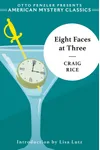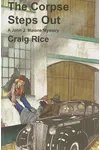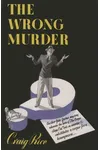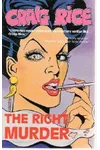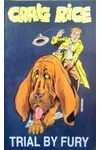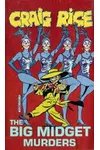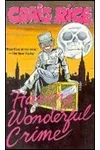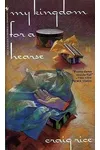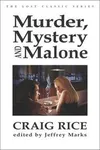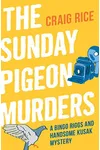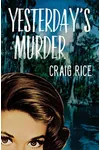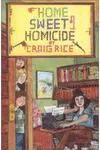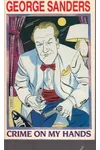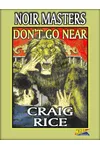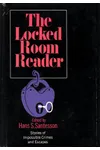Picture a Chicago-born wordsmith who spun mysteries with a twist of screwball comedy, rivaling Agatha Christie in her prime—meet Craig Rice! Born Georgiana Ann Randolph Craig in 1908, Rice became the first mystery writer to grace the cover of Time magazine in 1946, blending hard-boiled crime with witty humor that still captivates readers today.
Despite a chaotic personal life marked by multiple marriages and struggles with alcoholism, Rice’s storytelling genius shone through, creating unforgettable characters like the rumpled lawyer John J. Malone. Her work, a delightful cocktail of grit and giggles, left an indelible mark on the crime fiction genre.
The Making of Craig Rice
Born in Chicago, Georgiana’s early years were anything but stable. Her bohemian artist parents, Harry and Mary Craig, left her with relatives shortly after her birth, and she bounced between homes until finding stability with her aunt and uncle, Mr. and Mrs. Elton Rice, in Fort Atkinson, Wisconsin. It was Uncle Elton who sparked her love for mysteries, reading her Edgar Allan Poe’s chilling tales. By her teens, Rice was writing for The Milwaukee Journal and The Chicago American, later diving into radio scripts for stations like WCLO, where she created her first fictional character, Professor Silvernail, in 1933.
Craig Rice’s Unforgettable Stories
Rice’s debut novel, Eight Faces at Three (1939), introduced her iconic trio: John J. Malone, a hard-drinking Chicago lawyer; Jake Justus, a charming press agent; and Helene Brand, a glamorous, booze-loving heiress. This zany crew solved crimes with more luck than logic, set against surreal, often hilarious backdrops. The book’s quirky premise—every clock in a mansion stopping at 3 a.m. during a murder—set the tone for Rice’s signature style.
Other standouts include Home Sweet Homicide (1944), a cozy yet clever tale of a mystery writer’s kids solving a neighborhood murder, and The Sunday Pigeon Murders (1942), featuring con-artist photographers Bingo Riggs and Handsome Kusak. Rice’s prose sparkled with snappy dialogue and absurd situations, earning her the title “Queen of the Screwball Mystery.” Her collaboration with Stuart Palmer on screenplays and short stories, plus ghostwriting for George Sanders, showcased her versatility.
Rice’s stories often leaned on alcohol-soaked antics, mirroring her own life, but her humor and sharp character work kept them timeless. Her ability to weave serious crimes with comedic chaos made her a trailblazer, influencing later writers who blended genres.
Why Craig Rice Matters
Craig Rice’s impact on crime fiction lies in her fearless fusion of hard-boiled grit and screwball comedy, paving the way for modern authors who mix humor with mystery. Her characters, especially Malone, remain beloved for their flawed, relatable charm. Despite her decline into obscurity by her death in 1957 at age 49, Rice’s work endures through reprints and adaptations like the 1946 film Home Sweet Homicide. Her Time magazine cover cemented her as a cultural icon, proving women could dominate a male-heavy genre.
- Born: June 5, 1908, Chicago, Illinois
- Key Works: Eight Faces at Three, Home Sweet Homicide, The Sunday Pigeon Murders
- Notable Achievement: First mystery writer on Time magazine cover (1946)
Snag Eight Faces at Three and dive into Craig Rice’s gin-soaked, laugh-out-loud mysteries—you won’t be disappointed!
